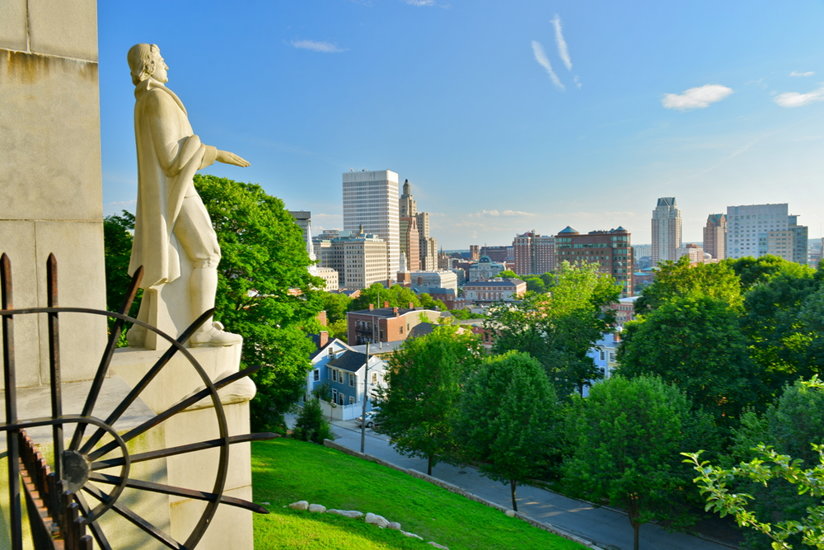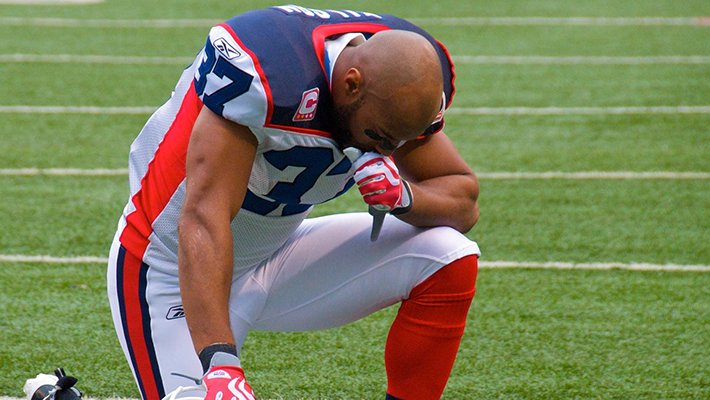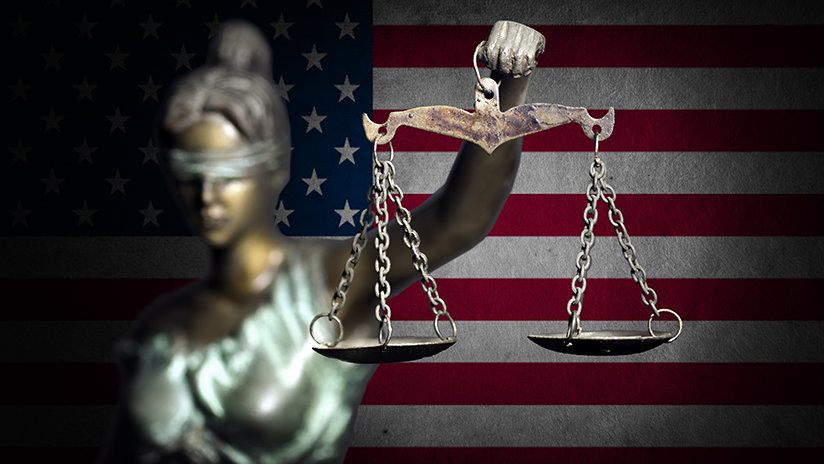Why You Should Be Worried About the Separation of Church and State
“Congress shall make no law respecting an establishment of religion, or prohibiting the free exercise thereof.”
– First Amendment, U.S. Constitution
The 16 words which begin the first 10 amendments to the Constitution, otherwise known as the Bill of Rights, consisting mainly of words of three syllables or less, would appear to be a very cut-and-dried, matter-of-fact, delineation of what the government cannot do regarding religion. Namely everything. Congress keeps its paws off religion. Period. And hence is brought into being what is perhaps our most cherished right: freedom of religion.
Astonishingly, however, these 16 words have been the subject of reams of legal documents and centuries of debate amongst those both well-intended and not.

In 1644, Roger Williams published the then-astonishing idea that whatever religion a person chooses is a matter of conscience and that government should not enforce a religion on its citizens. It was as routine as day follows night in Williams’ time that a nation had its own state religion, sworn to by its subjects who were also taxed to support that religion.
Williams’ arguments found an avid champion in British philosopher John Locke, who would later argue that enforcing “one state religion” would only cause disorder and that no earthly judge could evaluate the worth of a person’s conscience or “brand” of faith.
It was as routine as day follows night in Williams’ time that a nation had its own state religion.
Locke’s writings in turn profoundly influenced Founding Fathers Jefferson and Madison. In a rebuttal against a bill that would have effectively established a state religion in the colony of Virginia, Madison authored a passionate “Memorial and Remonstrance Against Religious Assessment,” which states in part regarding freedom of religion: “This right is in its nature an unalienable right. It is unalienable because the opinions of men, depending only on the evidence contemplated by their own minds cannot follow the dictates of other men: It is unalienable also because what is here a right towards men, is a duty towards the Creator.”
Thanks to the agitation of James Madison and his friend, Thomas Jefferson, a law that could have killed freedom of religion in the not-yet-born United States never saw the light of day.
Instead, the Virginia Assembly drafted and ratified The Virginia Declaration of Rights, a document Jefferson heavily borrowed from in crafting the Declaration of Independence and which states 16 years before the Bill of Rights: “…religion, or the duty which we owe to our Creator, and the manner of discharging it, can be directed only by reason and conviction, not by force or violence; and therefore, all men are equally entitled to the free exercise of religion, according to the dictates of conscience…”
Church and state are separate. Everyone agrees. There are strict boundaries between the two.
But sometimes the boundaries become blurred.

A case now under consideration by the Supreme Court is one such example. Maine, a state with many small and far-flung communities, lacks a comprehensive public school system that can serve all its citizens. To make up for that lack, the state instituted a government-funded tuition program wherein the state will pay tuition for a private school of choice within the student’s community, provided that the school is not religious in nature.
Two private schools which would seem to fall outside of that category are the Bangor Christian School and Temple Academy. At the Bangor Christian School, fifth-grade social studies students are taught to “recognize God as Creator of the world” and ninth-graders are taught to “refute the teachings of the Islamic religion with the truth of God’s Word.” To work at the school, a teacher must affirm that “he/she is a ‘Born Again’ Christian who knows the Lord Jesus Christ as Savior,” and “must be an active, tithing member of a Bible-believing church.”
Church and state are separate. Everyone agrees. There are strict boundaries between the two. But sometimes the boundaries become blurred.
At Temple Academy, teachers sign a contract acknowledging that “God recognize[s] homosexuals and other deviants as perverted” and that “deviation from Scriptural standards is grounds for termination.” Temple will not admit children who identify as gay or who come “from homes with serious differences with the school’s biblical basis.”
The state of Maine, bowing to the separation of church and state, does not include those two schools among those whose tuition is largely taxpayer-funded. But two sets of parents have challenged Maine, claiming that the state must fund their tuition to those two schools, despite the fact that, putting aside any opinion of the schools’ teachings one way or the other, there are many taxpayers who would feel uncomfortable to pay for schools whose moral vision differs with their own, and which, as school policy, will only allow those who follow a certain religion’s teachings in their employ.
The case, Carson v. Makin, is expected to be decided by the Supreme Court this coming summer. If the Supreme Court rules that Maine must use its public education taxpayer-funded monies to support an inculcation of a world and moral view of one religion, then the separation of church and state is arguably at an end in the U.S.
Just as in the case of the colony of Virginia, and then later in the newly independent United States, those who wrote the laws felt that state-subsidized religion was a bad idea, harmful, in the end, to religion itself, which should be supported by its membership, governed by its own codes and doctrine and completely free from any government interference, including economic. As Benjamin Franklin commented, “When a Religion is good, I conceive that it will support itself; and when it cannot support itself, and God does not take care to support so that its professors are oblig’d to call for the help of the Civil Power, ’tis a Sign, I apprehend, of its being a bad one.”

Just how close are we to state-sponsored religion in this country? Surely “freedom of religion” is still far from being redefined to becoming, “freedom of one religion to the exclusion of all others.” Or is it?
This past year a citizen brought down the house thundering, “If we are going to have one nation under God, which we must, we have to have one religion. One nation under God, and one religion under God!”
The man was greeted by rapturous applause and ovations by an audience of over 5,000.
Where was this? Some totalitarian dictatorship? Some radical theocracy? It was in San Antonio, Texas. In this nation founded on religious tolerance, a small person with a big voice galvanized his countrymen blaring a message of exclusion and intolerance.
Surely “freedom of religion” is still far from being redefined to becoming, “freedom of one religion to the exclusion of all others.” Or is it?
The expected expressions of dismay and condemnation came rapidly. The Anti-Defamation League (ADL) and prominent individuals of other faiths all decried the remarks. “Anti-American,” “anti-democracy,” “dangerous” were the more common phrases.
A “freedom of religion” based on intolerance toward all but one or two religions is not acceptable in a free and tolerant society. Not surprisingly, then, the ADL, along with many other religious groups, have filed an Amicus Brief to the Supreme Court voicing their strong opposition to finding against the State of Maine in Carson v. Makin.
Among the many other groups signing the brief are the Baptist Joint Committee for Religious Liberty, Central Conference of American Rabbis, Evangelical Lutheran Church in America, General Synod of the United Church of Christ, Hindu American Foundation, Methodist Federation for Social Action, and The Sikh Coalition, to name a very few.
Roger Williams, John Locke, Madison, and Jefferson notwithstanding, the United States has too often done a bait-and-switch regarding religious freedom and tolerance. The Irish Catholics and members of the Church of Jesus Christ of Latter-day Saints are among the minority religions within our boundaries who have experienced physical and economic abuse. Antisemitism, on the rise in our own time, and the easy and casual calumny of religions like my own, Scientology, prove too well that our nation still has a long way to go.
Antisemitism, on the rise in our own time, and the easy and casual calumny of religions like Scientology prove too well that our nation still has a long way to go.
The march to fully realize the dream of Williams, Locke, Jefferson, Madison and more modernly King, Mandela, Eleanor Roosevelt, and others has been an uneven one at best.
For each Universal Declaration of Human Rights, for each “I Have A Dream,” for each “We Shall Overcome” there are small people, petty people with grimy agendas—people like David Duke, like Leah Remini, like the speaker who inflamed the San Antonio crowd just months ago.
And allowing religious freedom itself to be refined and redefined in the legal arena until it means the precise reverse of what was intended simply empowers such bigots and fools to revel in more discrimination, more hate, more abuse.
Which will it be for our country? A state religion to the exclusion and abuse of all others, or true freedom of religion—not just on paper or statuary, but an honest-to-God national sanctuary for all faiths, based on conscience, protected and nurtured?
As Roger Williams wrote nearly 400 years ago, “God is too large to be housed under one roof.”










